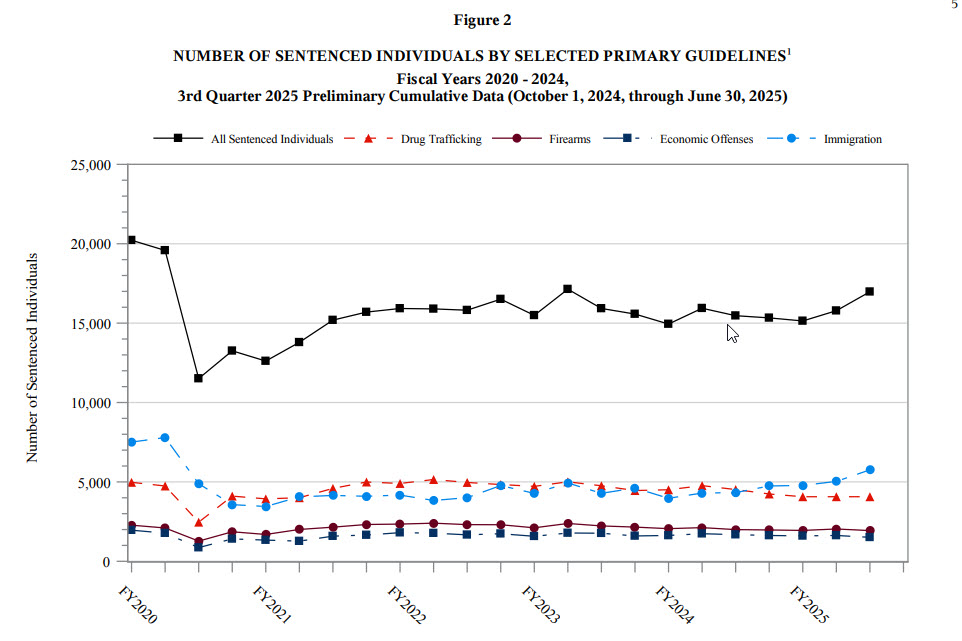Last Thursday, the U.S. Sentencing Commission released its Preliminary FY25 Third Quarterly Data Report, containing cumulative sentencing data from October 1, 2024, though June 30, 2025. Since this new data only reflects five months of the Trump administration’s sentencing practices, and many sentencings during this period reflect charging decisions of the Biden administration, it is probably premature to draw too many conclusions about DOJ’s new priorities.
Nonetheless, the report shows some interesting data points, even if too early to describe as trends. For example, there has been an uptick in immigration cases and decrease in drug cases relative to the overall case load. See Figures 1 and 2 below. In the Final FY24 Quarterly Sentencing Update (published April 7, 2025 and covering October 1, 2023, through September 30, 2024), data indicated 30% of the federal cases sentenced were immigration cases, and 29.6% were drug cases. By comparison, over the last nine months, 35.7% of the federal cases sentenced were immigration cases and 25.7% were dug cases, according to the FY 25 Third Quarter Data Report. Figure 2 below shows more than 5,000 immigration cases were sentenced in federal courts from April 1 to June 30, 2025—greater than any single quarter since the pandemic.
Notably, there has been a reduction in overall average sentences in federal court in FY 2025 so far. In FY 2024, the mean sentence for all federal cases was 52 months and the median was 24 months. In contrast, FY 2025 data so far show the mean sentence is 49 months and the median 21. Before sentencing advocates get too excited, keep in mind that immigration cases represent a third of all federal cases and typically involve shorter prison sentences, followed by deportation. The latest data also shows increases in mean and median sentences for specific offenses, such as drug and fraud cases.

